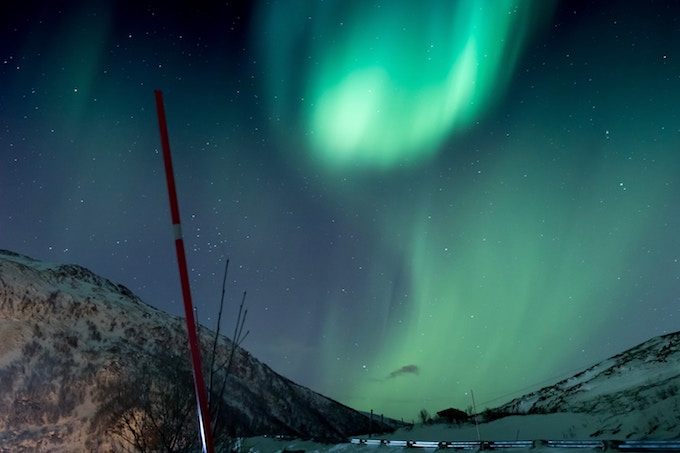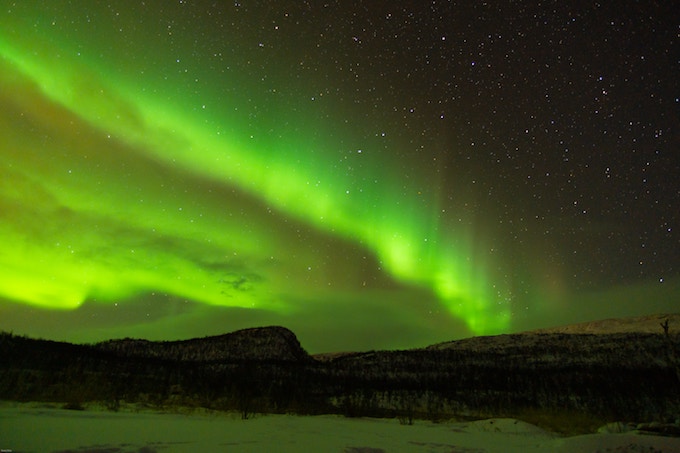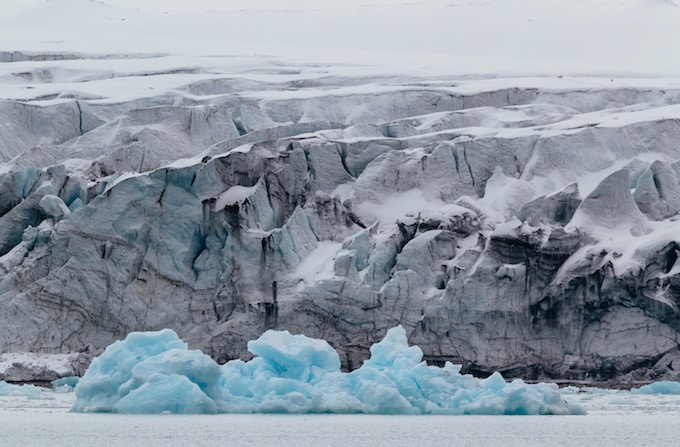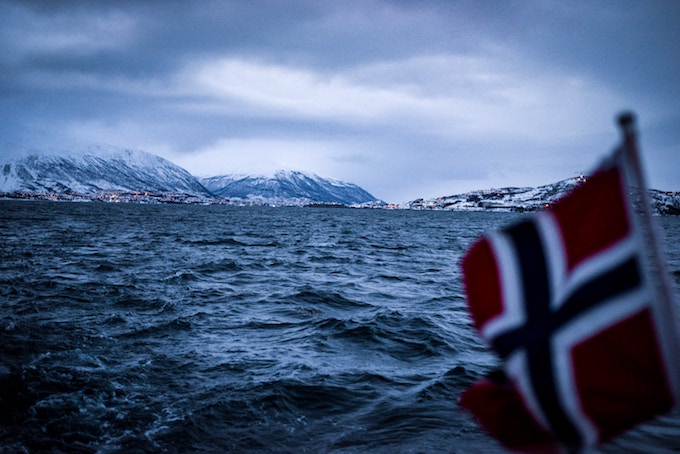Seeing the Aurora Borealis, also known as the northern lights, is a once in a lifetime experience many travellers crave to check off their bucket list. The beautiful green, purple, and blue lights dancing like ribbons across the sky is a humbling, haunting, and eerie experience that’s difficult to explain to those who haven’t seen them. It’s that exact reason that makes the elusive phenomena such a sought-after experience.
That said, chasing the northern lights isn’t the easiest activity. It requires an understanding of how the aurora works, heading to the right places, and being there at the right time. And as always, you’ll need a bit of luck…
One of the best places in the world to catch the lights is Norway. Thanks to its proximity to the North Pole and the country’s isolated regions, thousands of travellers visit each year looking to experience the lights. If you’re planning a trip to chase the northern lights in Norway, here’s everything you need to know.
What are the northern lights?
Before explaining how and when to see the northern lights in Norway, it’s important to understand how this amazing natural wonder works.
Without getting too scientific, the northern lights are the result of solar particles colliding with the atmosphere of the Earth. The sun is always radiating and releasing energy, but when the radiation becomes very intense, solar particles are produced after hitting the Earth’s atmosphere. Due to the low magnetism at the Northern and Southern poles, the particles are attracted to those regions, meaning you’re much more likely to see the lights in Norway than you are in say, Texas. The speed and strength of the particles determine the intensity and movement of the lights, while the colour is determined by which elements are in the atmosphere. Green and yellow indicate oxygen, red and purple indicate nitrogen, while blue indicates hydrogen.
As you can see, there’s a lot at play when it comes to catching the lights, as well as what type of solar show you’re going to experience.

The best time to see the northern lights in Norway
Now that you understand how the northern lights work, it’s time to start planning your trip. The most important factor when chasing the lights is knowing when to go – some months are much more successful than others.
The one thing that is absolutely essential to see the lights is darkness. Without darkness, it’s impossible to see this natural wonder. That’s why summer months are less favourable – the days are longer, meaning there is less darkness. Norway’s winter, the months from October to March, are the best time to see the lights, as there are more hours of darkness. Within those months your chances of seeing the northern lights are much higher.
- September/October: While there aren’t as many hours of darkness, this period of time statistically reports an increase in solar activity.
- November-February: These are Norway’s darkest months and therefore some of the best time to see the lights. Just watch the forecast, as November tends to have a higher number of cloudy skies.
- March/April: The Spring Equinox tends to increase solar activity, so these months can also be considered prime-time.

The best places to see the northern lights in Norway
In general, Lapland is the best place in Norway to see the northern lights at the strongest and most beautiful potential. This area covers the entire northern area of the country. Because it’s so far north, your odds of seeing the lights increases dramatically when compared to travellers who stay in the South. Getting into specifics, these are some of the best places to spot the Aurora Borealis in Norway.
- Loften Islands – great for photographers as the lights will be strong and the landscapes are equally as breathtaking.
- Tromso – easily the most famous place to see the lights in Norway, tourism here is highly developed, making it easy to find a great tour.
- North Cape – while hard to reach, this is one of the most unique and off the beaten path places to experience the lights.
- Svalbard – if you can make it all the way here, you may be able to spot polar bears and the lights at the same time.
- Alta – very far North while still remaining accessible, Alta is an increasing popular northern lights destination with a number of resorts dedicated to the cause.

General tips for chasing the northern lights
- The further north you go, the better your odds. Don’t be afraid of going somewhere remote or isolated!
- Learn how to take photographs, because shooting the northern lights isn’t the easiest task.
- Light pollution will ruin your odds of seeing the lights, so get as far away from cities and their lights.
- Check the weather for clouds, because if there are clouds, you won’t see much.
- Download a northern lights app. There are tons of options, but My Aurora is definitely one of the most popular.
- Keep a positive attitude. Sometimes you really do just need a bit of luck when it comes to finding the lights, so keep your hopes high and your camera ready.

One of the best parts of the northern lights is the fact that no two displays are ever the same – whether you’ve seen the northern lights once or one hundred times, you’ll always discover something new and amazing about one of nature’s most beautiful performances!
Have you ever seen the northern lights? Tell us all about it!


